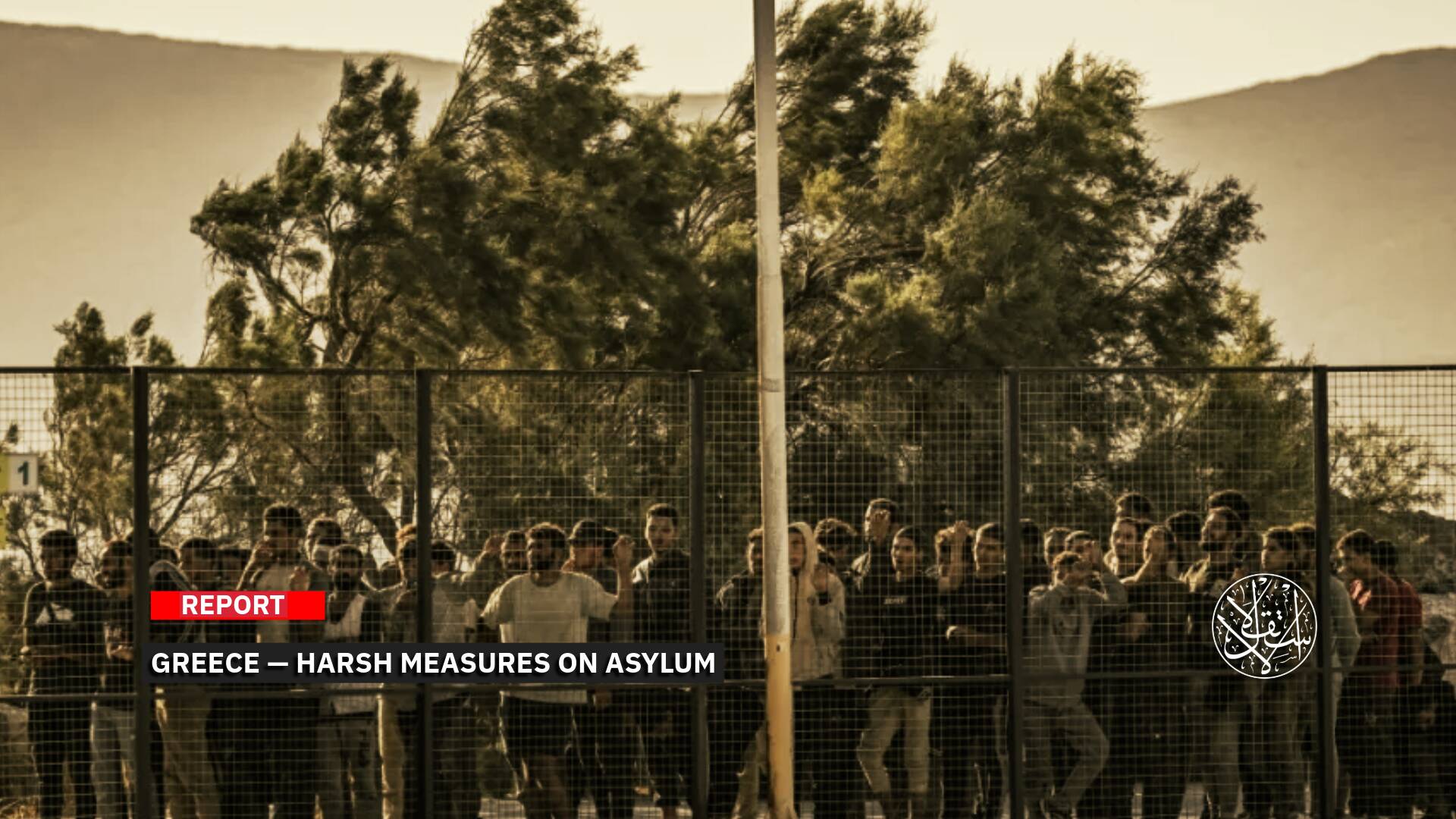Was Tehran the Target? Messages Behind the Israeli Navy’s Strikes on Yemen’s Ports

There are speculations that “Israel’s” naval strike on Yemen may be linked to its later attack on Iran.
Before the rhetoric of war between the United States and Iran over the nuclear program could escalate, and Washington greenlit “Israel” to carry out a military strike on Tehran—with President Donald Trump actively involved in pre-attack maneuvers—“Israel” launched an attack on a Yemeni port.
The strike, which took place on June 10, 2025, marked a departure from the usual pattern of air raids, having previously conducted 10 Israeli airstrikes on Yemen.
Instead, this was the first naval war, carried out by the Israeli navy some 1,600 kilometres away in the northern Red Sea.
The messages behind the attack are manifold. Some suggest an expansion of the Zionist military reach into Africa, edging closer to Iran.
Yet the most alarming implication, amid the intensifying conflict between “Israel” and Iran, is the potential for the occupation navy to use similar naval strikes against Tehran—aiming for precision targeting of nuclear sites.
The attack also raised pressing questions about how the occupation’s vessels reached Yemeni ports and managed their return journey.
What route did they take? Did they slip through unnoticed, or did they dock in African ports—or possibly in Arab ones like the United Arab Emirates? And were any facilitative arrangements in place?
What Happened?
So far, the Israeli occupation has deliberately shrouded the details of the attack in secrecy.
According to Yedioth Ahronoth, “The strike was carried out solely by Flotilla 3 – the missile ship flotilla – which fired toward the port using advanced Saar 6-class missile ships and other vessels operating in the northern Red Sea.”
Meanwhile, a reporter from Hebrew Channel 12 stated that “disclosure of details regarding the precision operation involving cooperation between the air force and navy is not yet permitted,” suggesting “Israel’s” reluctance to reveal how it reached Yemen so close to Iran for security reasons.
The Israeli navy released footage showing Saar 4.5 and Saar 6 missile boats prior to the strike on Al Hudaydah port, hinting that these vessels were used in the attack.
According to Yedioth Ahronoth, “Two long-range precision missiles, carrying a significant amount of explosives, were launched at the port’s pier infrastructure and hit their targets. The strike aimed to damage critical infrastructure in the port, particularly the docking and entry areas that serve as a key conduit for transferring weapons and military equipment to the Houthis. Among other things, the port is used to transport missiles launched toward Israel and other targets in the southern Red Sea.”
A report by Walla revealed that the ships traversed the Arabian Gulf under the supervision and protection of the air force, hinting at some degree of Gulf cooperation.
The report also points to a significant Iranian intelligence failure in detecting these vessels, a worrying prospect should the navy be used similarly against Tehran, according to Western analyses.
Yet, the Israeli military has not officially explained how it carried out the complex and exceptional naval operation on a Yemeni port located some 2,000 kilometres from Eilat.
Military experts suggest the greatest challenge was in securing the safe return journey of the Zionist ships.
Others speculate that part of the Israeli naval operation against Yemen was linked to the subsequent Israeli strike on Iran on June 13, 2025—either as a means of transporting Mossad operatives into Iranian territory or delivering military equipment and drones.

The Implications of the Attack
What caught the attention of military experts most, according to American and European press reports, was the choice to carry out the attack by sea this time against Yemen—and whether it was linked to testing a naval approach to striking Iranian nuclear targets, given the uncertainties of air strikes.
The timing is significant, coming amid the outbreak of war following Israeli and American threats, notably President Trump’s June 12, 2025 statement—reported by Reuters the same day—that an Israeli strike on Iran “could happen easily,” alongside reports of Mossad operatives infiltrating Iran by land and sea.
Notably, the headline chosen by Yedioth Ahronoth for its June 10, 2025 report read, “After Navy attack on Houthi port, missile fired from Yemen sends millions of Israelis to shelters.”
The paper noted that the missiles launched from warships toward the Yemeni port were, in fact, aimed at another location not far from there—Tehran.
It added that the attack, executed in this new manner, constituted an important regional statement, intended to deliver a powerful message to countries across the region about “Israel’s” capabilities, which extend beyond air force strikes or artillery and ballistic missiles launched from a distance, according to the writer.
Secondly, because additional operations can be conducted by sea, ranging from intelligence gathering to deploying ground forces.
Thirdly, “Israel” carried out the naval operation after having destroyed the Houthi air force and inflicted damage on their naval capabilities in the Gulf of Aden.
American officials confirmed ahead of the assault that “Israel” was “fully prepared” to attack Iran in the coming days and “completely ready” to launch a military strike against Tehran, according to the Hebrew newspaper Haaretz on June 21, 2025.
Israeli analyst Tamir Hayman told Hebrew Channel N12 on June 10, 2025, that the naval strike in Yemen marks a turning point, but the Israeli military will not be able to solve the Houthi problem alone.
He added that, strategically, Israel’s readiness to deploy forces in the Bab al-Mandeb Strait signals new boundaries of Israeli security interest and responsibility.
“If the Tiran Strait was previously the limit for the Israeli navy, those boundaries are now being redrawn—and that is significant,” Hayman said.
In other words, it signals a shift in the strategic equation. Where the Red Sea was once considered an Arab lake and “Tel Aviv” was confined to operating no further than the Straits of Tiran, it now finds itself close to Bab al-Mandeb.
The analyst implicitly referenced Iran, stating that “the naval operation opens new operational options. This involves intelligence and offensive capabilities, providing the military with an immediate target bank to strike and expand, enabling a high tempo of operations.”
Yet he conceded that military resolution cannot be achieved solely through land maneuvers, and therefore “the situation will not change fundamentally.”

The Secrecy of the Attack
Due to the secrecy surrounding the attack, speculation and interpretations have emerged in foreign media.
Questions have been raised over whether African states or the United Arab Emirates aided the Israeli vessels by providing cover for secrecy and logistical support—factors cited as reasons behind the operation’s clandestine nature and the blackout on its details.
Experts have speculated that the Israeli navy may have launched the operation from an overseas base in the Horn of Africa, with military installations in Eritrea on the Red Sea seen as the most geographically proximate and logistically convenient option for reaching Yemen’s coast.
During its conflict with Hezbollah in July 2006, the Israeli military used naval vessels based in Dahlak, Eritrea, launching missile attacks on targets within Lebanon from there.
Hebrew reports have suggested that the recent Israeli naval strike on the port of Al Hudaydah may be linked to intelligence warnings of a potential Houthi attack on Israeli bases in the Dahlak archipelago—located on the opposite side of the Red Sea from Yemen’s coast, including the islands of Desi, Dhum, and Shomi.
A Somali general revealed to Erem News on June 3, 2025, that “Israel” abruptly evacuated the Dahlak base at the entrance to the Red Sea—its second-largest military base outside “Israel.”
The base was granted to “Israel” in the 1990s by Eritrean President Isaias Afwerki, following “Israel’s” support for the Eritrean army in its conflicts against Yemen, Djibouti, and Ethiopia after gaining independence from Ethiopia in 1991.
The Somali general attributed the withdrawal of around 1,500 Israeli military personnel from the base to the evolving conflict with the Houthis and “Tel Aviv’s” fears that the base—home to advanced aircraft and radar systems—might become a target.
Speculation has since emerged over whether the Israeli attack on the port of Al Hudaydah was launched from these Red Sea bases, despite “Israel’s” claims that its vessels travelled thousands of kilometres from Eilat and Ashdod to strike the port—an assertion some view as exaggerated.
Iranian Failure
Despite “Israel’s” public warning, issued in a military statement on June 7, 2025, threatening strikes on Yemeni ports and demanding the evacuation of facilities at three harbours, there were no Yemeni preparations to repel the naval attack.
More significant—and alarming—was Iran’s failure to detect the Israeli ships or submarines that carried out the assault on Yemen, which may have been a rehearsal for a future strike on Iran itself.
This raises pressing questions: how were Israeli warships able to approach the shores of Al Hudaydah port, bringing critical infrastructure within their firing range?
How is it that the Houthis were able to strike American ships and aircraft carriers, yet failed to counter Israeli warships? How can they reportedly destroy a U.S. destroyer but not respond to a direct attack from a smaller naval force?
And how did “Israel” manage to strike Yemen from the sea just hours after Mahdi al-Mashat, head of the Houthi Supreme Political Council, threatened to shoot down Israeli aircraft if they attacked using an air defense network?
Were they perhaps fooled by the element of surprise—expecting an aerial assault but instead facing a naval attack?
Where did the Iranian navy disappear to, allowing Israeli vessels to operate freely in the region?
Or has the ongoing negotiations with Washington—which have proven to be a distraction—led Tehran to scale back its coordination with the Houthis, failing to monitor Israeli naval activity near its Red Sea shores?
What does Mahdi al-Mashat’s threat after the Israeli aggression, and the Houthis’ rocket response targeting Ben Gurion Airport, mean when he says, ‘we will instruct our Foreign Ministry to inform any country of the status of its embassy in the Zionist entity,’ stressing that the capabilities of the Yemeni missiles previously announced have not yet been used and that coordination is essential before their use.”
Is he implying that they possess Iranian missiles that remain off-limits, awaiting either permission or coordination with Tehran before they can be employed?

The Role of Submarines
Other experts have speculated that the Israeli naval strike on the Yemeni port may have been carried out by a submarine, given that Israeli vessels disappeared after the attack and were not detected.
It is also suggested that Israeli submarines played a role in at least protecting the fleet.
Could the naval war have been launched by invisible Israeli submarines, striking from the depths rather than from surface ships, despite the Israeli military spokesperson’s statement that the attack “was carried out by naval vessels and missiles”?
“Israel” possesses a fleet of submarines that constitute a strategic arm parallel to its air force.
On November 13, 2024, “Israel” received its sixth advanced German-built submarine, a Dolphin class vessel, according to i24news.
Named "Ahi Rahav" or simply "Rahav," this submarine—costing approximately €550 million—is equipped with unique systems and technologies.
It has been developed to allow vertical launch of missiles from the submarine’s hull, enhancing its strategic capabilities.
According to foreign reports, all Dolphin submarines are capable of launching cruise missiles manufactured by the Israeli company Rafael, missiles that can carry nuclear warheads over extended ranges.
Israeli military commentator Yossi Melman highlighted the significance of these submarines in The Jerusalem Post on January 13, 2016, stating, "the fact that the Israeli submarine fleet was mainly established for the purpose of deterrence and, according to foreign reports, to grant Israel the capability of a second nuclear strike."
“According to foreign reports, Israel has upgraded the submarines to conform to its own unique needs, turning them into platforms to launch nuclear-tipped missiles.”
“Israel’s decision to build an expanded submarine fleet stems from strategic thinking and opportunity exploitation, driven by concerns over nuclear armament in the Middle East and efforts to prevent Iran from acquiring nuclear weapons,” Melman said.
Sources
- The naval strike in Yemen marks a turning point, but the military will not be able to resolve the issue alone. [Arabic]
- After Navy attack on Houthi port, missile fired from Yemen sends millions of Israelis to shelters
- Israeli Navy carries out Yemen strikes for 1st time, targeting houthi-port
- “Special capabilities”: Israeli military unveils sixth and most advanced submarine in its naval fleet [Arabic]
- Analysis: For deterrence and the second nuclear strike
- “'Fully Ready' to Attack Iran in Coming Days, U.S. Officials Reportedly Say











